Are you struggling to get the most out of your pay-per-click (PPC) campaigns? Many businesses grapple with maximizing their return on investment in the competitive digital advertising landscape. But fear not! We’ve got you covered with these 10 proven steps to optimize your PPC campaign performance.
Why PPC Campaign Optimization Matters
Before we dive in, let’s talk about why PPC campaign optimization is crucial for your business. In today’s fast-paced digital world, every click counts – and costs. By fine-tuning your campaigns, you’re not just saving money; you’re ensuring that your ads reach the right people at the right time, maximizing your chances of conversion.
The Benefits of a Structured Approach
PPC optimization is crucial for your business success. Here’s why it’s a game-changer:
- Improved ROI: You spend your budget more efficiently with optimized campaigns, thus increasing return on investment. For instance, a B2B software company saw a 68% increase in ROI after refining its keyword strategy and ad copy.
- Higher Quality Traffic: Refined targeting brings in more qualified leads, improving conversion rates. Businesses tend to experience a boost in conversions after implementing detailed audience targeting.
- Better Ad Positions: You often achieve higher Quality Scores with optimized ads, which lead to better ad placements at lower costs. Businesses move from the bottom to the top of search results while reducing cost-per-click.
- Competitive Edge: Stay ahead of competitors by continually refining your PPC
Strategy. A startup outperformed established brands in their niche by consistently optimizing their campaigns based on performance data. - Data-Driven Insights: You can use PPC data to inform other marketing efforts, thus improving overall marketing performance. Insights from PPC campaigns are used by businesses to optimize their email marketing, increasing email-driven sales.
These tangible benefits demonstrate the impact of well-executed PPC optimization.
Ready to take your PPC game to the next level? Let’s dive into the nuts and bolts of optimizing your PPC campaigns.
1. Conduct Thorough Keyword Research: Building a Solid Foundation for Success
The foundation of any successful PPC campaign optimization strategy is solid keyword research. Here’s how to uncover the golden nuggets that’ll drive traffic without breaking the bank:
- Use tools like SEMrush Keyword Overview to identify high-potential keywords
- Leverage the SEMrush Keyword Magic Tool for in-depth keyword analysis and uncovering long-tail opportunities
- Focus on long-tail keywords for better targeting and lower competition
- Analyze search intent to ensure your keywords match user needs
- Track key performance metrics such as click-through rate (CTR), conversion rate, and cost per conversion
Look for CTR above 1% for non-brand terms and 3% for brand terms when evaluating keyword performance, along with conversion rates that align with or exceed your industry benchmarks and cost per conversion that falls within your target range.
Got your keywords nailed down? Great, let’s make sure you’re not wasting money on irrelevant clicks.
2. Implement Negative Keywords and Review Search Terms: Refining Your Targeting for Maximum Efficiency
You can use negative keywords as your secret weapon in PPC campaign optimization. Here’s how to leverage them effectively:
Proactive Negative Keyword Lists: Anticipating and Eliminating Irrelevant Traffic
- You should create industry-specific lists based on common, irrelevant terms
- You should include competitor names and products you don’t offer
- You should add terms related to job searches if you’re not hiring
For example, if you’re selling luxury watches, you might add “cheap,” “knockoff,” or “replica” to your negative keyword list.
Reactive Negative Keyword Lists: Learning and Adapting from Real-Time Data
- Regularly review your search terms report to identify irrelevant queries
- Add these irrelevant terms to your negative keyword list to prevent wasted spend
- Update your lists based on campaign performance data
Aim to review your search terms at least weekly and immediately add any irrelevant terms that are driving significant impressions or clicks.
Do you have negative keywords under control? Awesome. Now, let’s tackle your bidding strategy for maximum impact.
3. Optimize Your Bidding Strategy: Balancing Costs and Conversions for Optimal Performance
Bidding is where the rubber meets the road in PPC campaign optimization. Here’s how to approach it:
- You can use Maino’s AI-driven bidding algorithms for optimal performance. Our clients have seen up to 15% improvement in ROAS using our smart bidding strategies.
- Adjust bids based on keyword performance and conversion data.
- Set appropriate default bids:
- Start with industry benchmarks (e.g., $1-$2 for B2C, $2-$5 for B2B)
- Adjust based on your specific goals and budget
- Use a higher initial bid (20-30% above benchmark) for new campaigns to gather data quickly.
- Allocate budget wisely across campaigns:
- Prioritize high-performing campaigns (allocate 60-70% of budget)
- Set aside a portion for testing new strategies (20-30% of budget)
- Keep a small reserve for seasonal or unexpected opportunities (5-10%)
Remember, the “right” bid is the one that achieves your campaign goals while maintaining profitability. Regularly review and adjust your bids based on performance data.
Got your bids in check? Perfect. Next up, let’s make sure your ads are as eye-catching and effective as possible.
4. Enhance Your Ad Copy and Extensions: Crafting Compelling Messages That Drive Action
You want to make your ad copy your first impression count. Here’s how to make your ads pop:
- Craft compelling headlines that include your primary keyword
- Use ad extensions to provide additional information and increase click-through rates:
- Sitelink extensions: Increase visibility and direct users to specific pages (can improve CTR by 10-20%)
- Callout extensions: Highlight unique selling points (can boost CTR by 5-10%)
- Review extensions: Showcase positive feedback (can increase CTR by up to 15%)
- Call extensions: Make it easy for users to contact you (can improve conversion rates by 5-10%)
- Location extensions: Help local businesses drive foot traffic (can increase store visits by up to 20%)
When crafting your ad copy, follow the AIDA principle:
- Attention: Grab the user’s interest with a compelling headline
- Interest: Highlight key benefits or features
- Desire: Create a sense of urgency or exclusivity
- Action: Include a clear, strong call to action
Your ads are ready to rock. But what happens after the click? Let’s optimize those landing pages.
5. Optimize Landing Pages: Creating a Seamless User Experience for Higher Conversions
Your landing page is where the magic happens. Here’s how to ensure it seals the deal:
- Ensure fast load times:
- Compress images and use lazy loading
- Minimize HTTP requests
- Use a content delivery network (CDN)
- Aim for a load time under 3 seconds (every 1-second delay can reduce conversions by 7%)
- Secure website access:
- Use HTTPS encryption (can boost conversions by up to 30%)
- Display trust badges and security certificates prominently
- Create localized and relevant landing pages for different audience segments.
- Include descriptive, keyword-rich content that aligns with your ad copy.
- Feature clear calls-to-action (CTAs) and implement conversion tracking
Landing pages looking sharp? Great. Now, let’s ensure those who visited but didn’t convert are still in your sights.
6. Utilize Remarketing Strategies: Re-engaging Potential Customers for Increased Conversions
Don’t let potential customers slip away! Remarketing is a powerful tool in your PPC campaign optimization arsenal.
- Set up remarketing lists for website visitors who didn’t convert.
- Implement video retargeting:
- Create engaging video ads for YouTube and display networks
- Target users who have interacted with your website or previous video content
- Video remarketing can increase conversion rates by up to 50%
- Adjust remarketing lists based on your specific business goals:
- Cart abandoners (show ads with special offers or reminders)
- Product page viewers (showcase related or complementary products)
- Blog readers (offer downloadable content or free trials)
Don’t let those potential customers slip away! Now, let’s dive into the benefits of responsive search ads.
7. Leverage Responsive Search Ads (RSAs): Harnessing AI for Dynamic Ad Optimization
RSAs are the future of PPC advertising. Here’s why you should jump on board:
- Create multiple headlines (up to 15) and descriptions (up to 4) for more dynamic ads
- Let Google’s AI mix and match to find the best combinations.
- Use Maino’s AI-powered content generator to create compelling RSA elements.
- Evaluate RSA performance:
- Monitor ad strength feedback from Google.
- Analyze asset performance (low, good, best) and replace underperforming elements.
- Aim for an ad strength of “Good” or “Excellent.”
Are RSAs up and running? Excellent. Our next move: making sure we track every conversion accurately.
8. Track Conversions Accurately: Measuring Success and Informing Optimization Efforts
You can’t improve what you can’t measure. Accurate conversion tracking is crucial for PPC campaign optimization.
- Set up and test conversion tracking across all platforms.
- Use tools like Google Analytics 4 (GA4) and Google Tag Manager (GTM) for comprehensive tracking.
- Track multiple conversion types:
- Purchases
- Lead form submissions
- Phone calls
- Email sign-ups
- Create remarketing audiences based on tracked conversions for more targeted campaigns.
- Regularly audit your conversion tracking setup to ensure accuracy
Tracking conversions perfectly? Nicely done. Now, let’s test and refine your efforts with some A/B testing.
9. Perform Regular A/B Testing: Continuous Improvement Through Data-Driven Experimentation
Never stop improving! A/B testing is your pathway to continuous PPC campaign optimization.
- Test different ad copy variations, visuals, and CTAs
- Experiment with landing page layouts and content
- Use Google Ads Experiments for structured testing
- Let Maino’s AI analyze your test results for actionable insights
When using tools like Google Ads Experiments, look for:
- Statistical significance (aim for at least 95% confidence)
- Substantial improvements (e.g., 10% or more increase in CTR or conversion rate)
- Consistency across different segments (e.g., devices, locations)
Perfecting through testing is a must. But remember, constant vigilance is key. Let’s talk about monitoring and adjustments.
10. Continuously Monitor and Adjust PPC Campaigns: Staying Agile in a Dynamic Digital Landscape
PPC campaign optimization is not a set-it-and-forget-it task. Stay vigilant!
- Regularly review campaign performance metrics:
- Click-through rate (CTR)
- Conversion rate
- Cost per conversion
- Quality Score
- Identify underperforming campaigns and make necessary adjustments
- Consider pausing or scrapping campaigns if:
- They consistently fail to meet ROI goals (e.g., negative ROAS for 2+ weeks)
- The cost per conversion is significantly higher than your target (e.g., 50% above target for 1+ month)
- There’s a sustained drop in CTR or Quality Score (e.g., 30% decrease over 2 weeks)
- Conduct periodic audits to ensure your strategy aligns with your business goals
You’ve got the tools and steps; now it’s about staying on top of your efforts. Let’s wrap up with a quick recap.
Conclusion: Supercharge Your PPC Performance with Maino
You are making significant progress toward success with these 10 steps. Remember, PPC campaign optimization is an ongoing process – the formula to digital excellence is always changing, and so should your strategies. We strongly encourage you to regularly analyze your campaigns and implement enhancements based on the data you gather.
Key Characteristics of Successful PPC Ads
As you implement these optimization steps, keep in mind the hallmarks of high-performing PPC ads which the right partner will help you execute:
- Relevance to search intent
- Ensure your ad copy directly addresses the user’s search query.
- Use keywords strategically to match the searcher’s intent and increase Quality Score.
- Clear and compelling value proposition
- Clearly communicate what makes your offer unique and valuable to the user.
- Highlight specific benefits or features that set you apart from competitors.
- Strong call-to-action
- Use action-oriented language that prompts the user to take the next step.
- Create a sense of urgency with phrases like “Limited Time Offer” or “Act Now.”
- Use of ad extensions
- Leverage various ad extensions to provide additional information and increase ad real estate.
- Implement sitelinks, callouts, structured snippets, and other relevant extensions to improve click-through rates.
- Mobile optimization
- Ensure your ads and landing pages are fully responsive and load quickly on mobile devices.
- Use mobile-specific ad formats and extensions to enhance user experience on smartphones and tablets.
- Consistent messaging from ad to landing page
- Maintain a cohesive message and design from your ad to the landing page to meet user expectations.
- Ensure that your landing page delivers on the promises made in your ad to improve conversion rates.
Do you want to take your PPC performance to reach new heights? You can use Maino’s AI-powered ad management solutions to streamline your optimization efforts, from keyword research to performance analysis. You can reach the right audience with the right message using our advanced targeting capabilities and dynamic creative tools.







